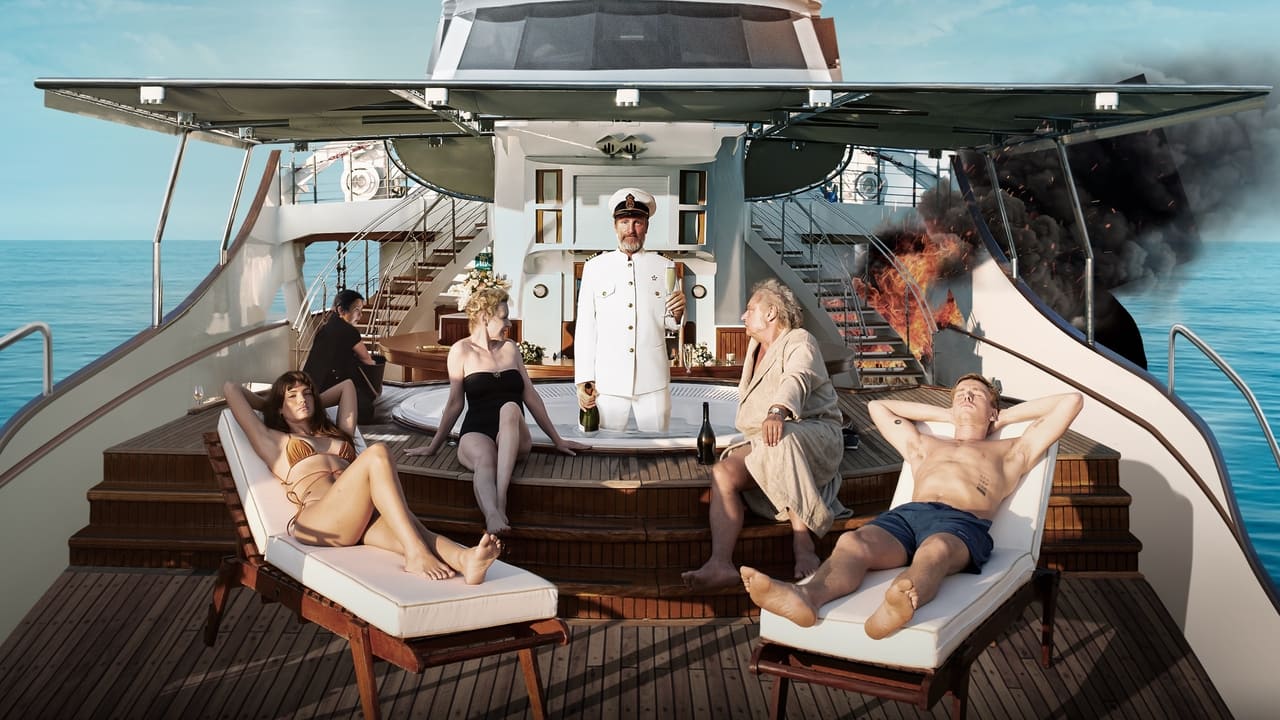By: Louisa Moore / www.ScreenZealots.com
Writer / director Ruben Östlund‘s wickedly sharp black comedy “Triangle of Sadness” offers a biting satire of everything from gender roles, capitalist society, corruption of power, modern masculinity, and the social hierarchies that result from a system that encourages class division. The film has a lot to say and does it well, wading through layers of stinging dialogue, sophisticated observations, and lots and lots of vomit.
The film is a lot more than its now-infamous fifteen minute puking scene, however. It’s an in-your-face story that doesn’t shy away from confronting everything from the rampant abuse of the less privileged to the primitive savagery of human nature.
Instagram influencers and celebrity model couple Carl (Harris Dickinson) and Yaya (Charlbi Dean) are invited on an all-expenses-paid vacation on a luxury cruise in exchange for expert promotion on social media. The ritzy yacht is frequented by ultra-rich passengers who demand the finest things in life (one of the early scenes features a helicopter air-dropping a couple of jars of Nutella in the ocean, which is hilarious because it’s so ridiculous).
As Carl and Yaya settle in, they begin to meet their very wealthy fellow guests, including a couple of British arms dealers, a Russian oligarch (Zlatko Buric), and an unhinged Marxist boat captain (Woody Harrelson) who spends the majority of the cruise drunk and locked in his cabin. If not a recipe for disaster, it certainly sets the stage for an interesting few days at sea. But after the ship encounters a vicious storm and capsizes, the handful of survivors are left stranded on a deserted island and fighting for survival.
The film has a lot to say about feminism, sexism, today’s social-media obsessed society, the gross exploitation of the working class, the conflicts between the haves and have-nots, the shallowness of the fashion industry, and lots more.
While it would’ve been the easier route to demonize the billionaires in his story, Östlund instead chooses to make them appropriately ostentatious yet still kind of likeable. They’re not entirely jackasses, they’re just mega-wealthy. Setting the film on a cruise ship is brilliant too, as they have a built-in class system between passengers and amongst the crew. The boat symbolizes the hierarchy of social classes, including the officers, the predominantly white “face time” staff, and the lower rungs that include the cooks, engineers, janitorial workers, and other people of color. It’s satisfying to watch the pecking order not only completely dissolve but get turned upside down after the yacht sinks. That’s when the working class takes over, because they’re the ones who know how to get stuff done.
The film offers shrewd observations and a critique of class and privilege, culminating in a third act that delivers a bountiful amount of schadenfreude. The best is the story of “toilet worker” Abigal (Dolly De Leon, who gives the film’s standout performance), a woman who quickly takes command on the deserted island because she is the only person with any sort of survival skills. After starting a fire, catching fish, and handling the distribution of the small amount of supplies left on the lifeboat, she demands that everyone refer to her as “Captain.” She even begins trading food for sexual favors with Carl.
Östlund’s film about a cruise from hell is an achievement in satire that effortlessly skewers many timely subjects. He sets his eyes squarely on deserved targets and dismantles them with wit and sophistication, making “Triangle of Sadness” one of the smartest and most interesting films of the year.
